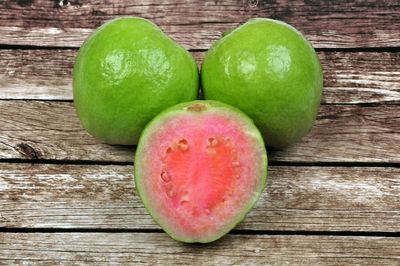When to Plant Guava Seeds
In commercial orchards, guava trees are vegetatively propagated by air layering, stem cuttings, grafting, and budding. For the home grower, guava seed propagation is a great experiment just as much gardening is. Guava trees can be grown in USDA zones 9a to 10b outdoors or in USDA zone 8 and below in a pot on a sunny, covered porch through winter or in a greenhouse. Although seed grown guava doesn’t reproduce true to type, it is an economical way to grow guava and isn’t uncommon. Seeds should be planted immediately upon extracting form mature fruit.
How to Grow Guava Trees from Seed
The first step to growing guava from seed is to break the seed dormancy. This is done in one of two ways. Either place the seeds in a pot of boiling water for five minutes or soak the seeds in water for two weeks prior to planting. Both of these allow the seed coat to soften and, thus, hasten germination. Once the seeds have been soaked, fill a nursery pot with soilless seed starting mix. Press one seed into the center of the pot with your finger. Be sure to cover the seed with a bit of soilless mixture. Water the seeds with a misting spray and place the container in a warm place with temperatures around 65 degrees F. (18 C.) or above. The seeds should germinate in two to eight weeks depending upon the temperature. In cooler climates, place the pot on a seed heating pad to help maintain a consistently warm temperature and speed up germination. Keep an eye on the seed pot and water when needed, when the top of the soil feels dry.
